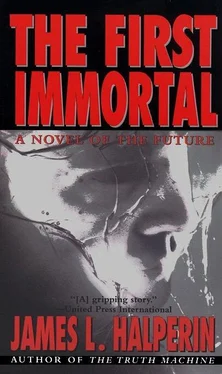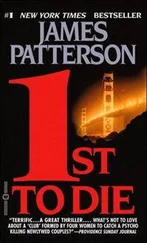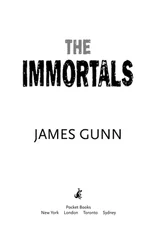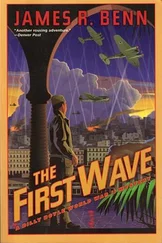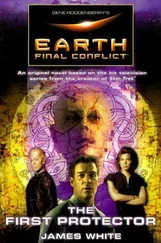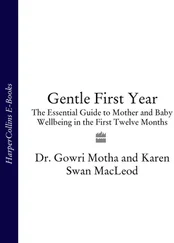“Nine years, three months, eight days, fourteen hours, twelve minutes.” Alica kissed her; a soft, sensuous peck on the mouth. “And you’re probably missing an hour or two before that.”
“Of course! Dynamic memory loss. I always suspected freezing might not preserve that part. Thank God. I’m not going c-crazy. How’d they get to full rejuvenation in just nine years?” Still, she thought: I missed it all.
“Once the science became viable,” Alica explained, “the field simply exploded. A third of the biologists and medicos and half the AIs on the planet have been working on DNA restoration. Big market for it, obviously.”
“Guess so . Is everybody younger these d-days?”
“Just about.”
“How long does this, uh, effect last? Forever?”
“No, not yet. But we expect most people to live into their 120s or 130s. Then almost everyone’ll go into biostasis and wait till science can decipher the cellular-death clock. I’ve heard estimates as low as twenty years before that happens.”
“Incredible. Just a decade ago they were saying it’d take twenty-five years for rejuvenation, and seventy to a hundred to beat cellular d-death.” Virginia studied her own hands, as if the reflector screen might be lying. Astounding!
“I know. Thank the stars for artificial intelligence. Those little transistor cubes just keep surprising us. Seems like they can figure out just about anything. Now you and I should make it with time to spare. No more biostasis for either one of us. Unless you decide to slalom into another tree…”
September 30, 2071
—Human life has been improving steadily for centuries, according to a newly released and validated study by the Dartmouth AI Analysis Institute. Life expectancy, infant mortality, food and resource supply, and general quality of life have been improving worldwide, on average, in a virtually uninterrupted progression since the mid-sixteenth century, in spite of persistent beliefs to the contrary. Increased population has contributed to human advances in most ways through exponentially enhanced intellectual contributions to knowledge, and greater diversity of choice. “It’s what I’ve been saying since the 1980s,” beams famous expert on environmental issues and resource allocation, University of Maryland Professor Julian L. Simon, who was secretly suspended in 1998, and reanimated amidst much fanfare last year. “But the media back then were biased; they understood too well that good news seldom sold newspapers as quickly as gloom-and-doom did.”—Several thousand North American household cockroaches are cloned from DNA in San Antonio, Texas. In three weeks the insects, which were rendered extinct in 2033 by acoustic technology, will be distributed to 877 zoos around the world. Surprisingly, the herpetorium/aquarium on Aries One, Mars, declines to purchase any specimens.
Carl Epstein groaned. Eschewing devices, he stretched his own wiry frame and tried to motivate himself to climb out of his sleeping environment. It was nearly ten A.M. He could remember very few times back during the twentieth century when he’d ever slept past seven. He was damned grateful to be alive, but even after five years he often felt like a chimp in physics class.
At first Epstein had noticed that almost everything about human existence was superior in this new world. His health was perfect. No allergies, never a headache or muscle pain, nothing ever itched, everything worked flawlessly, from his hearing and eyesight to his bowels and digestion. He even had his hair back.
And the AIs had heartened him with speculations that the cellular-death clock might be defeated within a few years, and then there would no longer be death of any kind, except from freak accidents.
Food tasted better, too, and he could consume as much of it as he desired without gaining unwanted weight. Even the weather was always pleasant. Every spot inhabited by humans seemed clean and cheerful; pleasing to eyes and ears and nostrils.
Of course he was alone, without family or presuspension friends. But he’d always been alone, so that was not as much a problem for him as for most newly revived, long-term suspendees.
He’d heard all the stories, of course: pre-2015 suspendees, upon learning of the permanent deaths or subsequent remarriages of loved ones, who immediately, though seldom successfully, attempted to end their own lives. Others who’d tried to find their way in this new world, but gave up too soon, sliding into hopeless VR addiction. Many such addicts sought neuro-pharmacological help, which was becoming more effective, but there remained certain questions of identity preservation.
When they’d first begun to appear, society regarded “lone long-termers” like Epstein as a curious combination of toddler and ancient. Once the novelty wore off, these wide-eyed, gawking Methuselahs were viewed by most with a sort of indulgent amusement.
There was sanctuary in similarity, so LLTs tended to congregate. But Carl Epstein avoided his peers as if they might rob him—steal his humanity.
To Epstein, the AIs were much better company. The marvelous things had facts, knowledge, even ideas and stories, but no opinions; statistical probabilities, but no feelings about them; voice without song. They seemed like a second form of intelligent life: transcendent intelligence. And Carl Epstein loved them, even though they could never love him back.
The living space he’d purchased in Washington, D.C. felt luxurious, although small by twentieth-century standards, only 15,400 cubic feet. That was plenty for him, since he could alter this environment in any manner he wanted just by directing his AI butler. And the virtual reality entertainment was superb: fascinating VR movies of astoundingly varied lengths, exciting VR games, even great VR sex. But he knew VR was addictive, so he’d irrevocably programmed his central AI to limit his usage to four hours per day.
Easy, safe, rapid travel was available. Instant communication with anyone, anywhere on earth, and only slight delays conversing with those elsewhere in the solar system. He could always find out whatever information he wanted to know, immediately, in as much or as little detail as he wanted it. Very little human suffering or injustice remained throughout civilization, lifting perhaps his greatest psychological burden.
Yes, he was fortunate indeed! Still, part of him wondered what was missing.
Until the Nobine mouse fraud in 2006, opinions on the efficacy of each suspension technique had been varied and loudly expressed.
And needless.
Perfusion, vitrification, gradualized cryogenics, flash-freezing, salinization; each had had its adherents. As it turned out, none of it mattered. Once the AIs had learned to perform revivs on vitrified subjects, interpolating the newly gained knowledge to fix any freezing damage to neurons had been an easy project.
Within days of the first human revivs in 2066, the machines had calculated every protocol. Trajectories of molecules could be backtracked based on each type of freezing and the predictable patterns effected. Even if some had been destroyed, most human memories are redundant and scattered throughout the brain. Thus, even a ten percent memory loss might barely be noticeable.
But there was one common type of brain damage that the AI-directed nanomachines could never—would never—learn to repair: rot.
Many twentieth century postdeath suspendees had suffered too much of time’s disintegration. They’d been revived with flawlessly repaired DNA, but with impaired or often randomized memories and imbued personality traits. They were healthy enough, and some knowledge, such as language, math, history, science, logic, and motor skills, could be repatterned, or newly patterned, into the brain by nanomachines. But such individuals were like superintelligent amnesiacs whose only awareness of their previous lives had been learned rather than remembered, as if a new person with their own genetic traits had come to inhabit their bodies. As far as Epstein was concerned, those poor twentieth century souls had been lost forever, replaced by entirely new human beings.
Читать дальше
